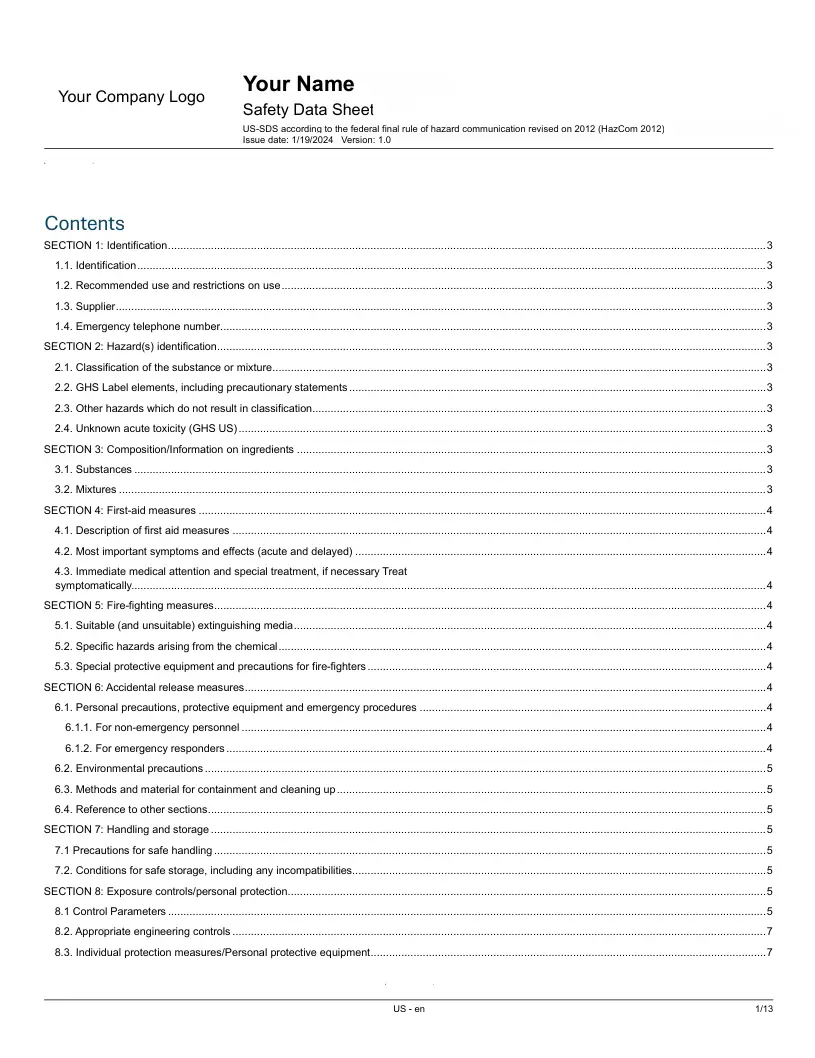How ICSDS MSDS/SDS Services Help Your Business Stay Compliant
ICSDS offers MSDS/SDS authoring, review, updates, and translation to keep your business safe, compliant, and globally ready. Contact us today. Introduction In today’s regulatory landscape, maintaining up-to-date and compliant Safety Data Sheets (SDS) is crucial for businesses handling chemicals. Non-compliance can lead to legal penalties, safety hazards, and reputational damage. ICSDS, a trusted provider of SDS solutions, offers comprehensive services to ensure businesses meet global standards efficiently. Understanding SDS and Its Importance Safety Data Sheets (formerly known as Material Safety Data Sheets or MSDS) are documents that provide critical information about chemical substances, including their hazards, handling procedures, and emergency measures. The transition from MSDS to SDS, standardized by the Globally Harmonized System (GHS), ensures consistency and clarity in hazard communication worldwide. ICSDS SDS Services Overview SDS/MSDS Authoring ICSDS specializes in creating SDS documents that comply with international regulations such as OSHA, WHMIS, and REACH. Their expert team ensures that each SDS is tailored to the specific chemical composition and usage, facilitating safe handling and compliance. SDS/MSDS Review Regular reviews of existing SDS are essential to maintain compliance with evolving regulations. ICSDS conducts thorough assessments to identify and rectify any discrepancies or outdated information, ensuring that your SDS remains current and accurate. SDS/MSDS Revision When changes occur in chemical formulations or regulatory requirements, SDS documents must be revised accordingly. ICSDS provides meticulous revision services, updating all necessary sections to reflect the latest information and standards. SDS/MSDS Update ICSDS offers timely updates to SDS documents, incorporating new data and regulatory changes. This proactive approach helps businesses avoid compliance issues and ensures that safety information is always up to date. MSDS/SDS Translation For businesses operating globally, accurate translation of SDS is vital. ICSDS provides professional translation services, ensuring that SDS documents are linguistically and culturally appropriate for various regions, while maintaining compliance with local regulations. Benefits of Partnering with ICSDS Conclusion Maintaining compliant and accurate SDS documents is not just a regulatory requirement but a critical component of workplace safety and operational efficiency. ICSDS offers a comprehensive suite of services to assist businesses in navigating the complexities of SDS management, ensuring safety, compliance, and peace of mind. Ensure your business is compliant and your employees are safe. Contact ICSDS today to learn more about their SDS services and how they can support your organization’s safety and compliance goals. 📧 Email: icsds@icsds.com 🌐 Website: https://icsds.com

